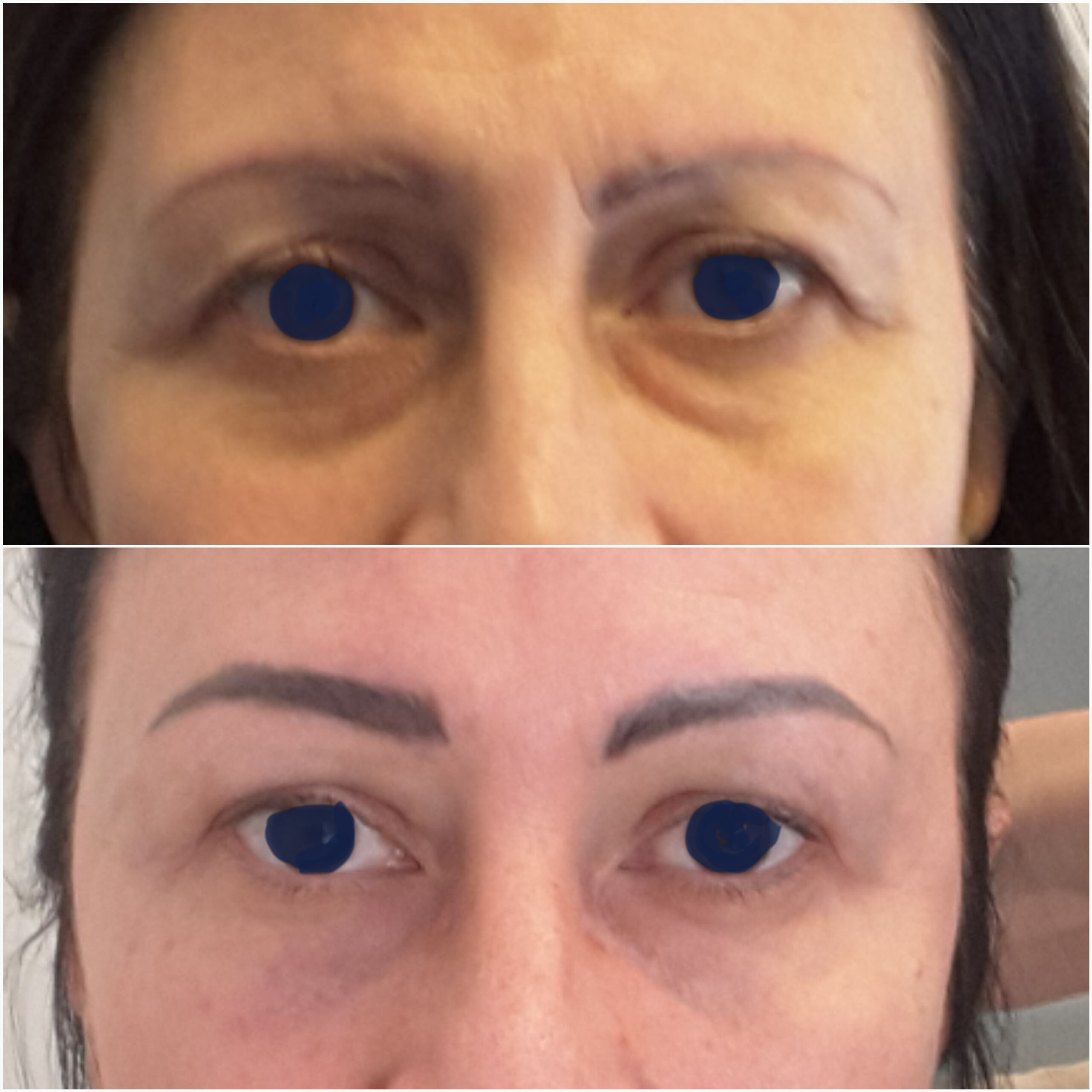Dark Circles
When tear troughs are too deep, they create a tired, aged appearance. This effect is even more pronounced if the area appears dark or violet in color.
Causes may include:
- Genetic predisposition
- Past or current respiratory problems
- Chronic eyelid inflammation
- Very thin skin
- Allergies
- Anemia
- Rapid weight loss
- Dehydration
- Sleep disturbances, among others
In Morphodynamic Cosmetic Surgery, dark circles are always assessed within the broader anatomical context of the surrounding regions. Since multiple factors can contribute, treatment often requires a stepwise, multimodal approach.
For example, dark pigmentation may result from:
- Hyperpigmentation (hereditary or post-inflammatory)
- Excessive skin transparency exposing the underlying blood vessels
Meanwhile, the depth of the tear trough is often linked to inadequate nasal breathing.
Common treatments include:
- Hyaluronic acid fillers (to be used cautiously to avoid persistent edema or the “Tyndall effect,” a bluish discoloration of the treated area)
- Lightening chemical peels
- Specialized threads
- Micro-lipofilling
- Treatment of adjacent tissues
Ultimately, the choice of therapy must be etiology-based, targeting the specific causes in each patient.
Sunken Eyes
The most common causes of sunken or hollow eyes are:
- Aging
- Previous upper eyelid blepharoplasty
- Poor diet or eating disorders
- Periods of extreme stress
- Intense physical exertion
- Genetic predisposition
- Dehydration
- Chronic debilitating illnesses
The underlying mechanism is atrophy of the periocular fat, leading to a hollowed appearance. Since this effect is usually considered unattractive, several corrective methods are available:
- Injection of low-density hyaluronic acid fillers
- Autologous fat grafting
- Use of fine threads
- Best outcomes are often achieved by combining techniques
For safety and naturalness, it is preferable to perform treatments gradually in multiple sessions, reducing filler-related edema and allowing tissues to stabilize without overcorrection.
A full upper eyelid is a hallmark of youth and good health—restoring this fullness is therefore a key goal in rejuvenation strategies.

